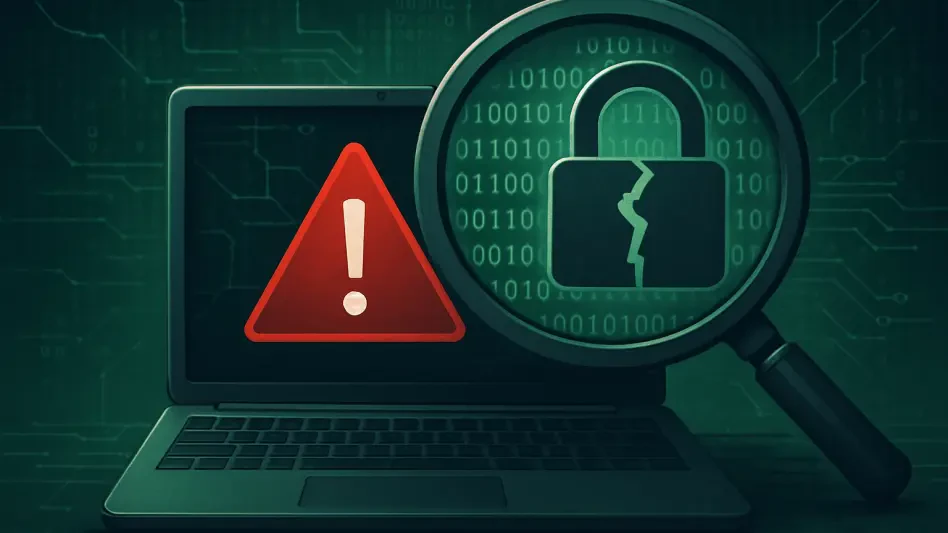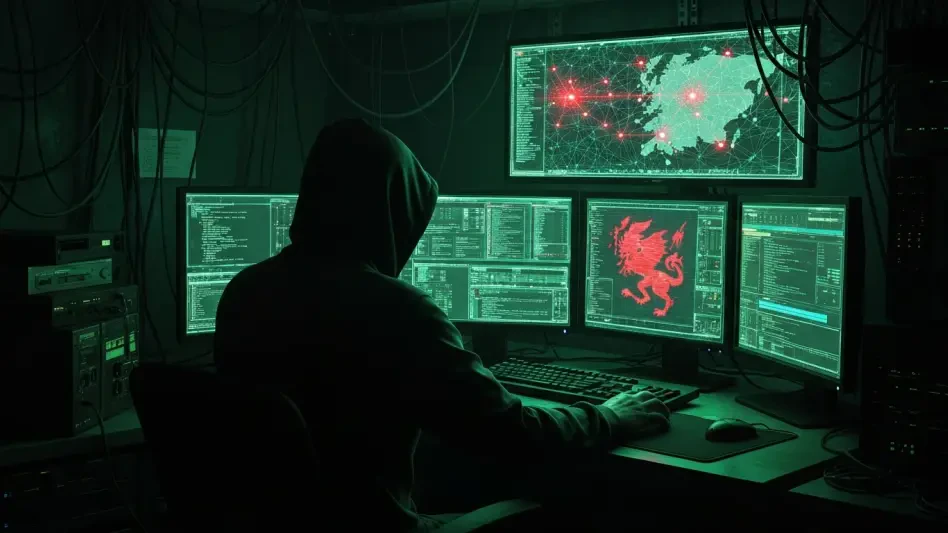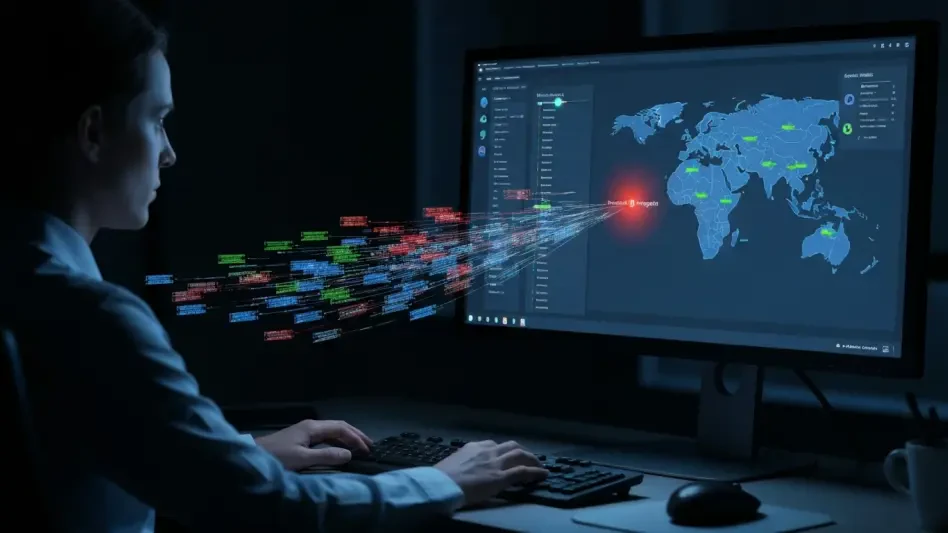Imagine a scenario where a widely trusted file transfer solution, used by organizations across the globe to securely exchange sensitive data, becomes a gateway for cybercriminals to infiltrate systems undetected. This is the alarming reality facing users of GoAnywhere MFT, a managed file transfer service developed by Fortra. In recent weeks, a zero-day vulnerability identified as CVE-2025-10035 has rocked the cybersecurity landscape, exposing critical flaws in a platform relied upon by industries ranging from transportation to education. The active exploitation by a ransomware group known as Storm-1175 has amplified concerns, raising questions about the security of digital infrastructure in an era of escalating cyber threats.
The significance of this vulnerability cannot be overstated, as it has already been exploited to deploy ransomware and steal data, impacting a broad spectrum of sectors. With reports of attacks predating the vendor’s disclosure, the incident highlights not only technical shortcomings but also issues of transparency and response time. This review delves into the specifics of GoAnywhere MFT, evaluates the performance and security challenges exposed by this flaw, and assesses the broader implications for organizations dependent on such technology.
In-Depth Analysis of GoAnywhere MFT and Its Security Flaws
Overview of Features and Intended Performance
GoAnywhere MFT is designed as a robust solution for secure file transfers, offering organizations a centralized platform to exchange data with partners, clients, and internal teams. Its key features include encryption, automation of file transfer workflows, and compliance with stringent regulatory standards like HIPAA and GDPR. Marketed as a reliable tool for businesses handling sensitive information, the service aims to minimize risks associated with data breaches through secure protocols and user access controls. For many, it serves as a cornerstone of operational efficiency, particularly in industries where data integrity and confidentiality are paramount.
However, the promise of seamless and secure file transfers has been undermined by the emergence of CVE-2025-10035. While the platform’s functionality remains strong under normal conditions, the presence of a critical zero-day vulnerability reveals a significant gap in its security architecture. This flaw has shifted focus from the service’s operational strengths to its potential as a vector for catastrophic cyberattacks, prompting a reevaluation of its reliability among users.
Technical Dissection of the Vulnerability
At the heart of this crisis lies a severe flaw that enables remote code execution, allowing attackers to bypass security measures and gain unauthorized access to affected systems. The exploitation process is multi-staged, beginning with the installation of monitoring tools such as SimpleHelp and MeshAgent, followed by the deployment of web shells to maintain persistence. Attackers, notably the Storm-1175 group, have also leveraged tools like Rclone for data theft, culminating in ransomware deployment that locks organizations out of their own systems until a ransom is paid.
The tactics employed by Storm-1175 demonstrate a sophisticated blend of legitimate and malicious tools to evade detection. By using built-in Windows utilities for lateral movement within networks, the group minimizes its digital footprint, making it challenging for traditional security measures to identify the breach. This exploitation not only highlights a critical lapse in GoAnywhere MFT’s defenses but also underscores the evolving nature of cyber threats that exploit trusted software for financial gain through extortion.
Timeline and Vendor Response Challenges
Reports indicate that attacks exploiting this vulnerability began around September 10 or 11, a timeline corroborated by independent researchers and Microsoft Threat Intelligence. This predates Fortra’s official disclosure and patch release on September 18, creating a window of opportunity for attackers to target unsuspecting organizations. The discrepancy between the vendor’s reported discovery date and external findings has fueled skepticism about the accuracy of Fortra’s initial assessment and the speed of its response to such a critical issue.
Further compounding the problem is Fortra’s limited communication following the initial security advisory, which included only basic indicators of compromise. The silence on crucial details, such as how attackers may have accessed private keys necessary for exploitation, has left customers and cybersecurity experts frustrated. This lack of transparency raises serious concerns about the vendor’s commitment to supporting users during a crisis, ultimately undermining trust in the platform’s ability to safeguard data.
Sector-Wide Impact and Historical Context
Industries at Risk and Scale of Damage
The reach of Storm-1175’s attacks spans multiple sectors, including transportation, education, retail, insurance, and manufacturing, reflecting the broad adoption of GoAnywhere MFT across diverse industries. Each of these fields relies heavily on secure data exchange for daily operations, making the exploitation of this vulnerability particularly disruptive. The potential for data theft and ransomware deployment poses not only operational risks but also significant financial burdens, as organizations face downtime, recovery costs, and potential regulatory penalties.
While the exact number of affected entities remains unclear, historical precedent offers a sobering perspective. A similar zero-day exploit in GoAnywhere MFT from a couple of years ago impacted over 100 organizations, suggesting that the current incident could have a comparable or even greater reach. This pattern of recurring vulnerabilities points to systemic challenges within the platform’s security framework, urging users to reassess their dependence on this technology.
Broader Implications for Cybersecurity Practices
Beyond the immediate fallout, this incident serves as a stark reminder of the vulnerabilities inherent in widely used software solutions. The ability of cybercriminals to exploit trusted tools for malicious purposes underscores the need for robust, proactive security measures across all digital platforms. For many organizations, the breach has exposed gaps in their own cybersecurity strategies, particularly in monitoring for early signs of compromise and responding to zero-day threats.
The event also casts a spotlight on the critical role of vendor accountability in maintaining user trust. Fortra’s reticence to provide detailed updates or address unanswered questions has amplified the challenges faced by affected organizations, leaving them to navigate the aftermath with limited guidance. This dynamic illustrates a broader tension in the cybersecurity industry, where the balance between rapid response and comprehensive communication often determines the extent of damage control.
Verdict and Path Ahead
Reflecting on the tumultuous events surrounding GoAnywhere MFT, it becomes evident that while the platform offers valuable features for secure file transfer, its susceptibility to critical vulnerabilities like CVE-2025-10035 severely compromises its reliability. The sophisticated tactics of Storm-1175, combined with evidence of exploitation before Fortra’s disclosure, paint a grim picture of the risks embedded in even the most trusted technologies. Fortra’s minimal communication further erodes confidence, leaving users grappling with uncertainty in the face of ongoing threats.
Moving forward, organizations that rely on this service should prioritize immediate steps to mitigate risks, such as applying patches without delay and enhancing network monitoring to detect any lingering signs of compromise. Beyond individual action, there is a pressing need for the industry to advocate for greater vendor transparency, ensuring that critical details are shared promptly to aid in defense strategies. Looking ahead, exploring alternative file transfer solutions with stronger security track records could serve as a prudent measure to prevent the recurrence of such incidents, while pushing for collaborative efforts between vendors and users to fortify digital defenses against the ever-evolving landscape of cyber threats.








